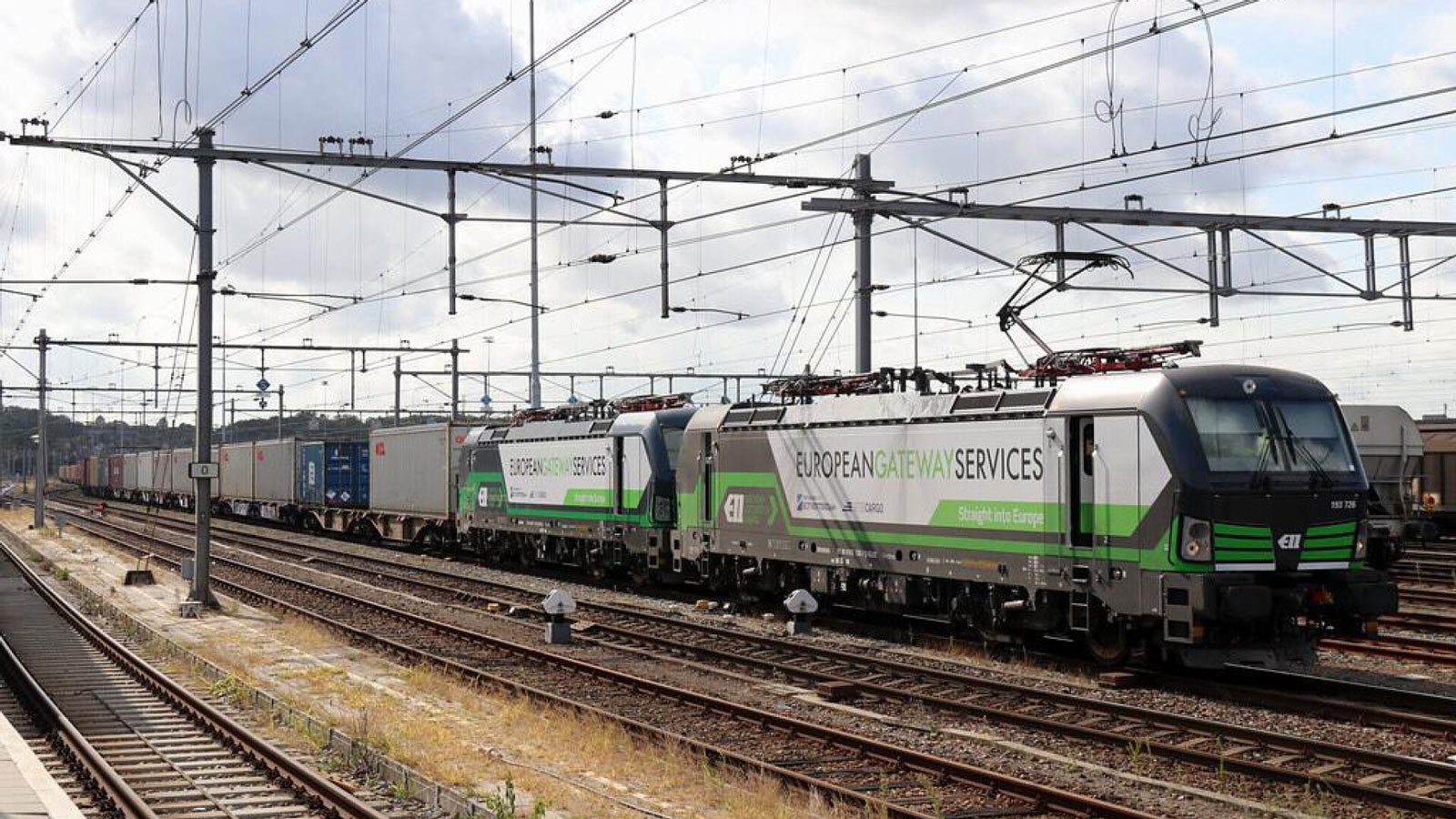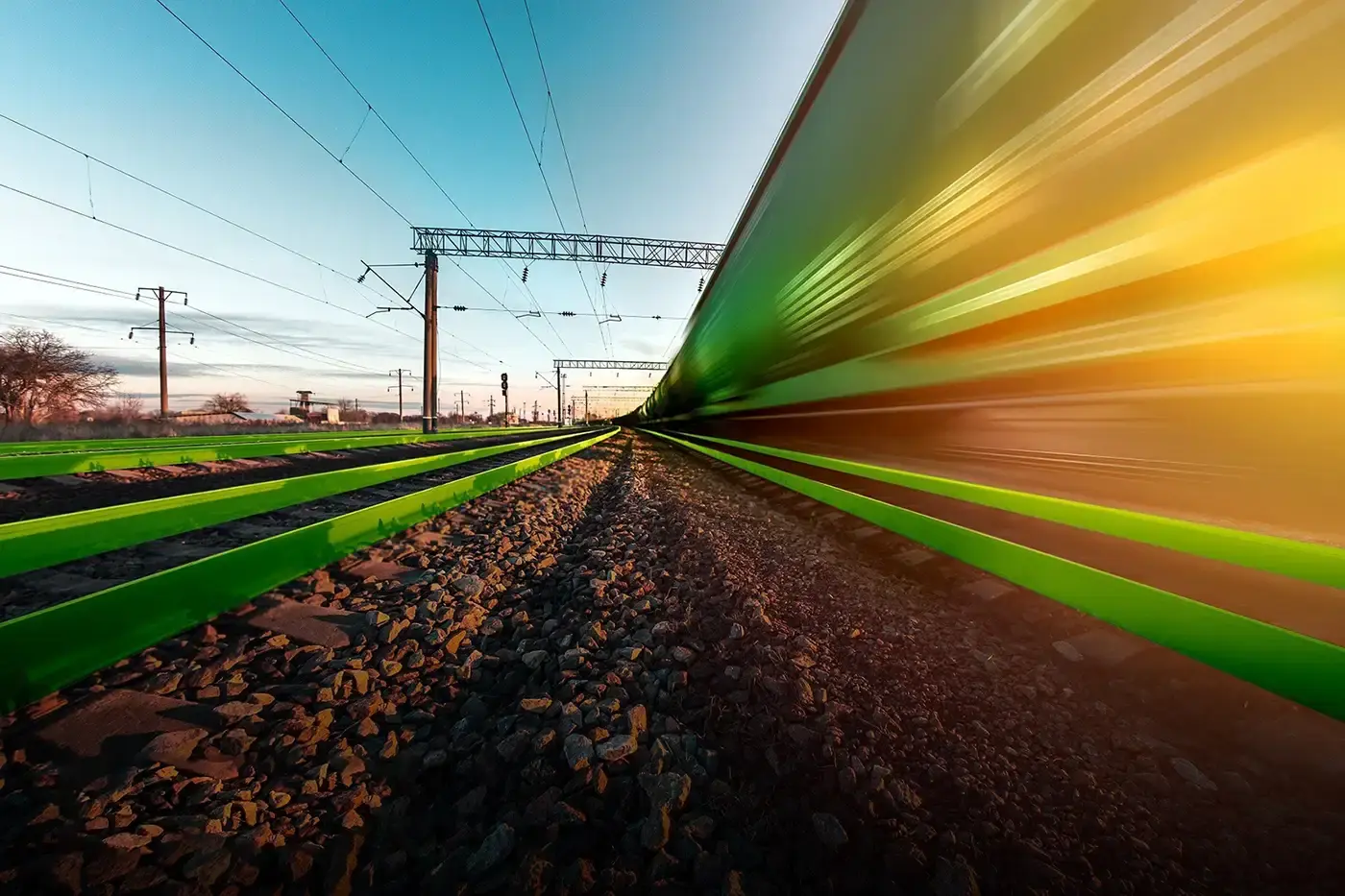August 5, 2020 | #BESTPRACTICE
Synchromodal plans contribute to a higher frequency of our shuttles.
Large container ships arrive and depart every day at the terminals of Hutchison Ports ECT Rotterdam (ECT). Many containers with origin or destination in the European hinterland are loaded or unloaded here. The process therefore does not start or end at the gateway to the terminals on the Maasvlakte, but elsewhere in the Netherlands or Europe. In conversation with Rob Bagchus, Arno van Rijn and Paul Zoeter van ECT, it becomes clear that the competitive position is partly determined by the quality of the connections with the hinterland. And then rail freight comes right around the corner.

Due to the economies of scale in the container map, more and more containers are loaded and unloaded per call. Good hinterland connections are a must for us to prevent congestion at the terminal on the one hand and to make the terminal accessible as well as possible on the other.
Partly for this reason, we have developed our own network of hinterland terminals and, thanks to our transport product European Gateways Services (EGS), high-frequency intermodal connections via rail and inland shipping are offered. You not only create more capacity, but also a better market range and more extensive services.
In order to make the most of the capacity of the modalities as optimally and efficiently as possible, we already developed a new concept about 10 years ago: synchromodal transport. Three steps can be distinguished in this:
Step 1: freedom in determining the planning per modality; for example, certain containers have more priority than the others;
Step 2: freedom in determining the choice of modality; barge, rail or road transport;
Step 3: freedom in determining the route between deepsea terminal and hinterland terminal or the empty depot.
In practice we see that step 1 and step 2 have already become increasingly commonplace. Step 3 is the most complex and requires adjustment of commercial and operational agreements with our customers. Alternative routes are increasingly being used in the Bavaria region of southern Germany and between Venlo and Duisburg.
We currently have a train connection on both Munich and Nürnberg. With a view to capacity optimization, we look at which route is most suitable per booking, if permitted by the customer, taking into account the last mile, of course. Conversely, our ECT Delta Terminal is an important hub for all terminals on the Maasvlakte. In this way we can drive a train every working day between Rotterdam and Bavaria, which strengthens the competitive position in this region compared to the German ports.

A major advantage of our synchromodal hinterland network is the possibility for shipping companies to offer CY (container yard) concepts to shippers. This means that the service extends beyond the deepsea terminal on the Maasvlakte. Shippers can pick up their container at the terminal in the hinterland and return it to the empty depot. In this way, shippers have more time available in the context of detention agreements. Thanks to this concept and our available network, there is less time pressure and track becomes more attractive.
The use of multiple modalities is also increasingly important with a view to contingency. Inland shipping is increasingly struggling with low water, which means that temporarily less capacity is available. Rail transport can provide a good backup in such a situation.
Rail freight transport has already proven itself as an indispensable modality in our network. And not only long distances to dry destinations. Rail can also compete at short distances. We now run 24 trains a week on Venlo. And that’s not just because of risk spreading. The track is simply very competitive here. This has grown historically and this example shows that rail transport is also an attractive option over a relatively shorter distance.
Nevertheless, we see that it is difficult for many parties to switch to rail for the long term. As soon as inland shipping has the usual capacity again, the cost is often decisive. In addition, it is more difficult to develop a track product. The investment risk is quite high. In addition, unlike inland shipping, it is less easy to scale up and scale. The latter was also evident in recent months. In exports, many shippers stopped production, while the store closures caused a drastic drop in imports. Various shipping companies therefore removed ships from circulation. The volumes became less and strongly fluctuating with June as the absolute low point. At that time it is really a challenge to organize the hinterland connections well. Long-term contracts often apply to rail, making it less easy to scale. At the same time, we have also opened our ECT deep sea terminals to continental handling for some time. The market showed an increasing demand for this, while it helps rail operators to use the shuttles as efficiently as possible. In this way, we ensure that we maintain the frequency of the shuttles and that intermodal transport by rail remains a sustainable and indispensable link in the opening up of the Rotterdam port to the European hinterland.



